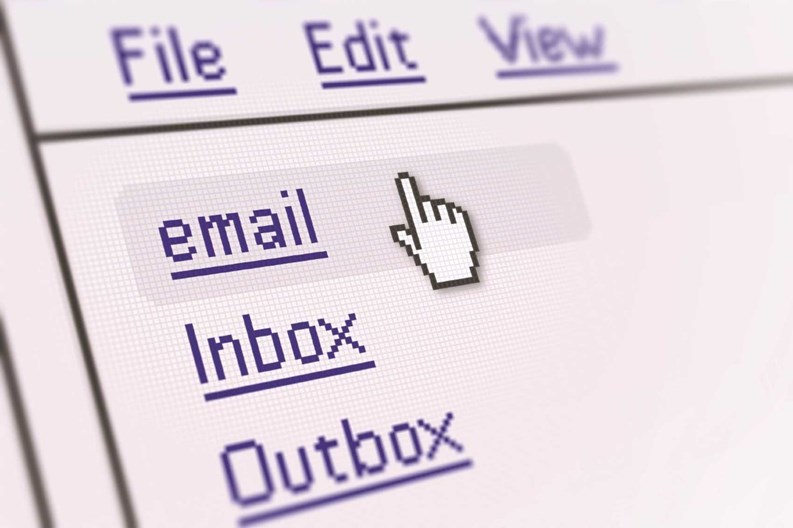Like it or not, e-mail is a permanent fixture of contemporary business communications. In real estate, board members and property managers use e-mail to discuss the most official and the most personal matters of their lives, from scheduling meetings to disseminating documents, to sharing a quirky video on YouTube. E-mail allows board members to discuss their concerns without having to call a meeting, work around everyone’s schedule, and find a place to physically meet.
But what even the savviest businessmen often overlook is that, when we communicate via e-mail, we leave a written record of everything we say. An e-mail is a legal footprint. (In fact, the New York Timesreported in June that prosecutors handling the Bear Sterns investment fiasco would be basing their case against some of the firm’s top executives on a series of incriminating e-mails—much as their colleagues did in the Enron prosecution.) Used with due caution, email is the businessperson’s best alibi, but occasionally, it can be used against you, too. That’s why it’s important to exercise discretion and good judgment when conducting board business via e-mail.
The Law
In a lawsuit, discovery is the pre-trial process wherein the two parties can request evidence from one another. Generally speaking, New York law provides that any relevant written communication is admissible as discovery, excluding correspondence between the client and his attorney. The law makes no distinction between electronic and written discovery (and actually, most investigators find e-mail more convenient to work with, since it’s easy to search electronically). In essence, it’s all fair game to opposing counsel should a legal action be brought. A written letter has the author’s signature at the bottom, tying the author to the content of the letter. Likewise, e-mail is linked to a specific account, whose owner is responsible for all e-mails sent from that address.
According to attorney Peter Schillinger, a partner with Odesser, Schillinger & Finsterwald, LLP in White Plains, “E-mail should be deemed to have the same legal weight and effect as a printed letter with an ink signature. A member of a cooperative board of directors must be careful when sending e-mails which speak to matters affecting legal rights and responsibilities, including communications relating to the rights of shareholders and the applications of prospective purchasers.” Personal feelings about an applicant, for instance, are dangerous grounds to cover in an e-mail.
Litigation is often impossible to predict, and legal proceedings can be brought long after an e-mail has been sent and forgotten. At the same time, even once you’ve removed an e-mail from your inbox, copies of the message are often stored elsewhere by the service provider. In effect, once you send an e-mail, you accept that it may be used as evidence for or against you at some point in the unforeseeable future.
“In order to avoid problems arising upon the unanticipated legal review of board members’ e-mails regarding sensitive topics,” Schillinger says, “board members are advised to consult the co-op’s counsel regarding the legal effect of the written representations they intend to make.”
The gains and risks associated with sending an e-mail on particularly sensitive topics need to be evaluated on a case-by-case basis with the same caution you’d bring to an official memo.
Use and Misuse
These days, e-mail has become the most commonly used method of communicating between property managers and board members.
According to Neil Davidowitz, president of Orsid Realty in Manhattan, some 90 percent of his company’s business is conducted over e-mail. Asked why his company uses e-mail so frequently, Davidowitz says, “It delineates a written record of what transpired and eliminates some of the vagueness of the telephone.” Add to that the options to forward a conversation to other relevant colleagues, and you have a very powerful communication tool.
But since e-mail communication does create a written record, it’s important to treat it as such. “In terms of training here,” Davidowitz says, “we stress that every single e-mail is a potentially discoverable document in a litigation.”
In other words, any e-mail you send might be used against your company during legal proceedings. Therefore, the writing contained therein should be of an appropriate subject matter and communicate what it intends to in a clear, unambiguous manner. Because it is written communication, the “that’s not what I meant” defense is unlikely to stand up in court.
All that notwithstanding, many employees and board members have a tendency to speak freely and informally over e-mail, more so than they would on the phone or in person. During the now infamous Enron proceedings, it was a series of e-mails that affirmatively placed executives at conspiratorial meetings they claimed had never happened. Knowing the criminal nature of their activities, these executives certainly would never have thought of sending out an official memo announcing the meetings. Yet they did something equally as foolish when they discussed the meetings on company e-mail. Yes, there’s a difference between the e-mail communications of a law-abiding cooperative board and those sent by Enron executives, but theirs should be a lesson to us all: be prepared to defend every word that you type.
“People have to realize,” adds Davidowitz, “that once you hit that send button, the e-mail is out there in cyberspace for all the world see at some future date.”
Delete Key?
Aside from the fact that many e-mail service providers keep copies of your sent mail, a deletion policy simply isn’t practical in terms of protecting oneself from future litigation. In his article for the The Corporate Counselor, attorney Michael G. Trachtman points out that “a wholesale e-mail deletion policy” would eliminate both the good e-mails and the bad: those that corroborated your side of the story along with those that did not.
It’s also important to limit the distribution of sensitive e-mails, just as you would a sensitive paper document.
Authors of e-mails should also be careful that they’re only sending sensitive e-mails to necessary parties. As useful as are the CC and BCC options, they’re often overused in the workplace. This is one way that sensitive information ends up someplace it shouldn’t. Every office has its “reply to all” story in which an employee accidentally sends a private e-mail to everyone on a given e-mail chain. (“Hey, did you hear about Bob? He called Jenny a you-know-what—and we all got the e-mail!”) These incidents make great fodder for the company holiday party, but under the right circumstances, they can lead to legal problems for the sending party and others involved.
Finally, it’s important to keep personal mail separate from your company account. Only relevant documents are discoverable in litigation. Just as your leather-bound diary is off limits to opposing counsel, so, too, are the e-mails you send from your Gmail account on your home computer (unless you start conducting business from the same account.) Still, many veteran businessmen insist on exchanging personal—sometimes extremely personal—messages over company email. Take, for instance, the case of former Boeing CEO Harry Stonecipher, who was fired after his inter-office love letters reached members of the board. Sure, his first mistake was in initiating the relationship itself, but it was the e-mails that ultimately spelled his demise.
Degrees of Caution
Across the board, every New York lawyer knows their clients need to exercise caution when using e-mail, but there are a number of interpretations as to just how careful one ought to be. Attorney Bruce A. Cholst of Rosen & Livingston in Manhattan has a simple recommendation for the cooperative and condominium community:
“Don’t conduct official business by e-mail,” he says. “Use it as a tool to facilitate setting up meetings, but don’t use it as a forum for discussion or an actual vote.”
Cholst’s recommendation may strike busy property managers as inconvenient, but he makes a valid point. After all, board members are not required to keep minutes at meetings. These discussions are, for all intents and purposes, off the record—not the case if you communicate via e-mail. Furthermore, business corporation law does not sanction votes by e-mail. Instead, a vote must be taken at a meeting open to owners on notice. Any e-mail vote will be deemed non-binding.
But others would disagree with the sweeping nature of Cholst’s statement. E-mail is, after all, a remarkable convenience for boards whose members have conflicting schedules.
Whatever your position, it’s important to realize that an e-mail chain is a trail of evidence that can act both in your favor and against you. Before you send any e-mail, it’s reasonable to ask yourself: “Is this something I want on record?” If so, make sure that it’s worded in a way that cannot be manipulated for someone else’s gain. And remember, it’s important to make sure that you’re reviewing questionable communications with your legal counsel before sending them off into cyberspace. E-mail is certainly a modern-day convenience but one wrong click on the send button can spell big trouble for boards and board members alike.
Jonathan Levin is a freelance writer and copy editor living in Philadelphia.







Leave a Comment